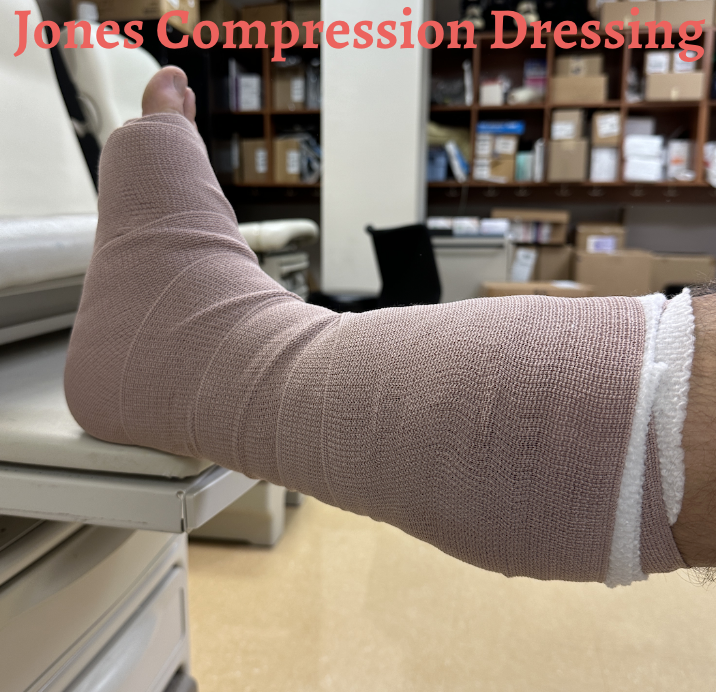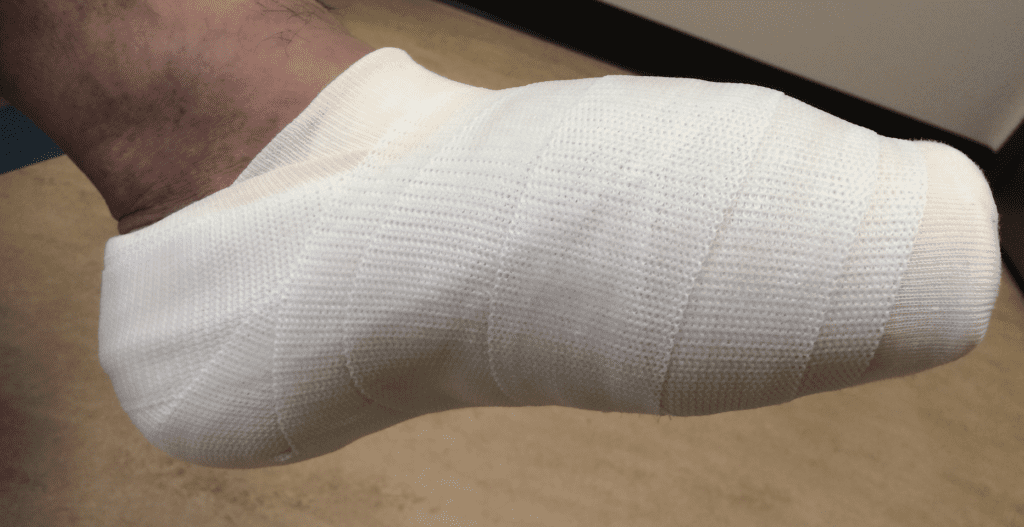Authored by Leland Jaffe DPM, FACFAS – Podiatric Foot and Ankle Surgeon – Updated 12-29-23
A Jones compression dressing is a specialized medical bandage/dressing used to manage swelling, particularly in the lower leg or foot. Named after its inventor, Dr. Robert Jones, this dressing is widely employed in the treatment of various conditions such as sprains, fractures, and edema management. In this post, I’ll walk you through the steps of applying a Jones compression dressing effectively.
Materials Needed for a Jones Compression Dressing:
-
- Specialist Cast Padding / Webril — https://amzn.to/46QsCls
-
- Ace Bandage (6-inch)
-
- 5 x 30 inch plaster splints x 2 (optional)
-
- Coban (optional)
-
- Stockinette (optional)
-
- Lamb’s Wood/cotton balls (optional)
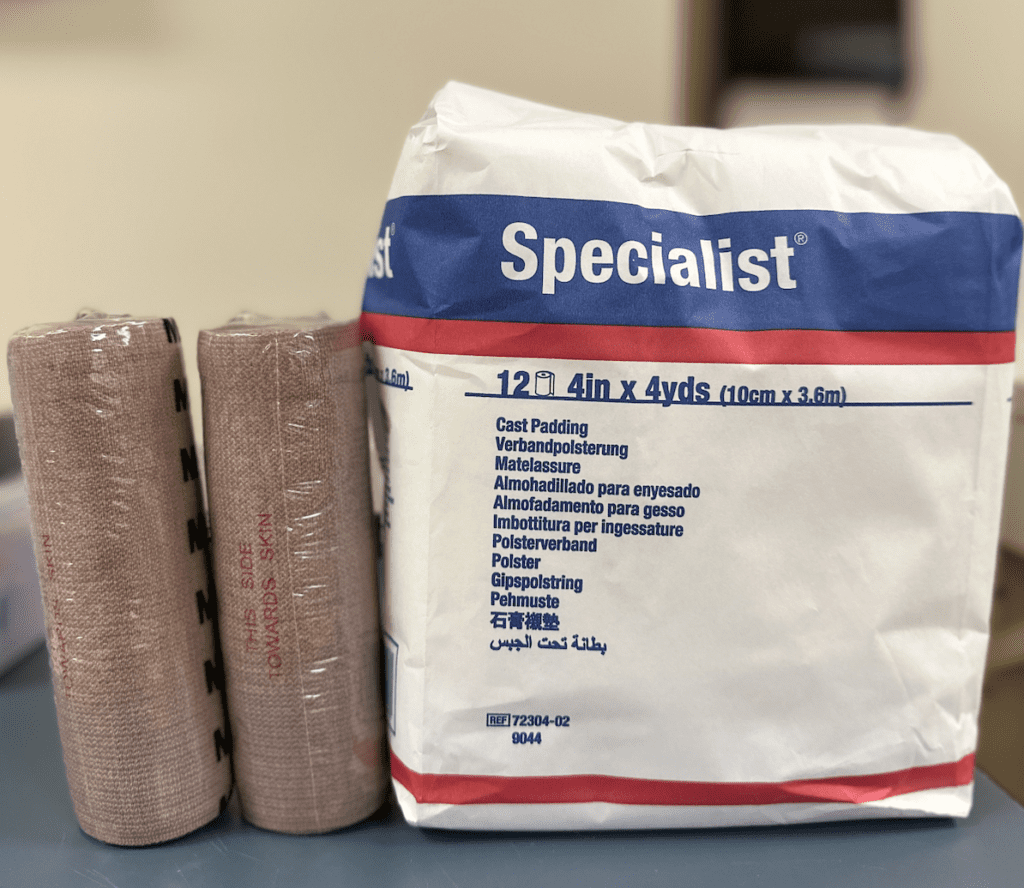

Step-by-Step Instructions:
Step 1: Prepare the Area
Before applying the dressing, ensure the affected area is clean and dry. If there are any open wounds or incisions, cover them with an appropriate dressing. This helps to prevent infection and ensures a clean surface for the dressing.
Step 2: Apply the First Layer
The first layer begins with the optional placement of a stockinette as well as cotton balls or Lamb’s Wood placement between the toes to minimize the risk of interdigital lesions/ulcerations. Next, multiple rolls of 4-inch specialist cast are applied from just distal to the 1st and 5th metatarsal heads proximally to a level just distal to the tibial tuberosity. When applying the cast padding, attempt to create a pressure gradient from distal to proximal. Apply a 6-inch Ace bandage from distal (metatarsal phalangeal joint level) to proximal.


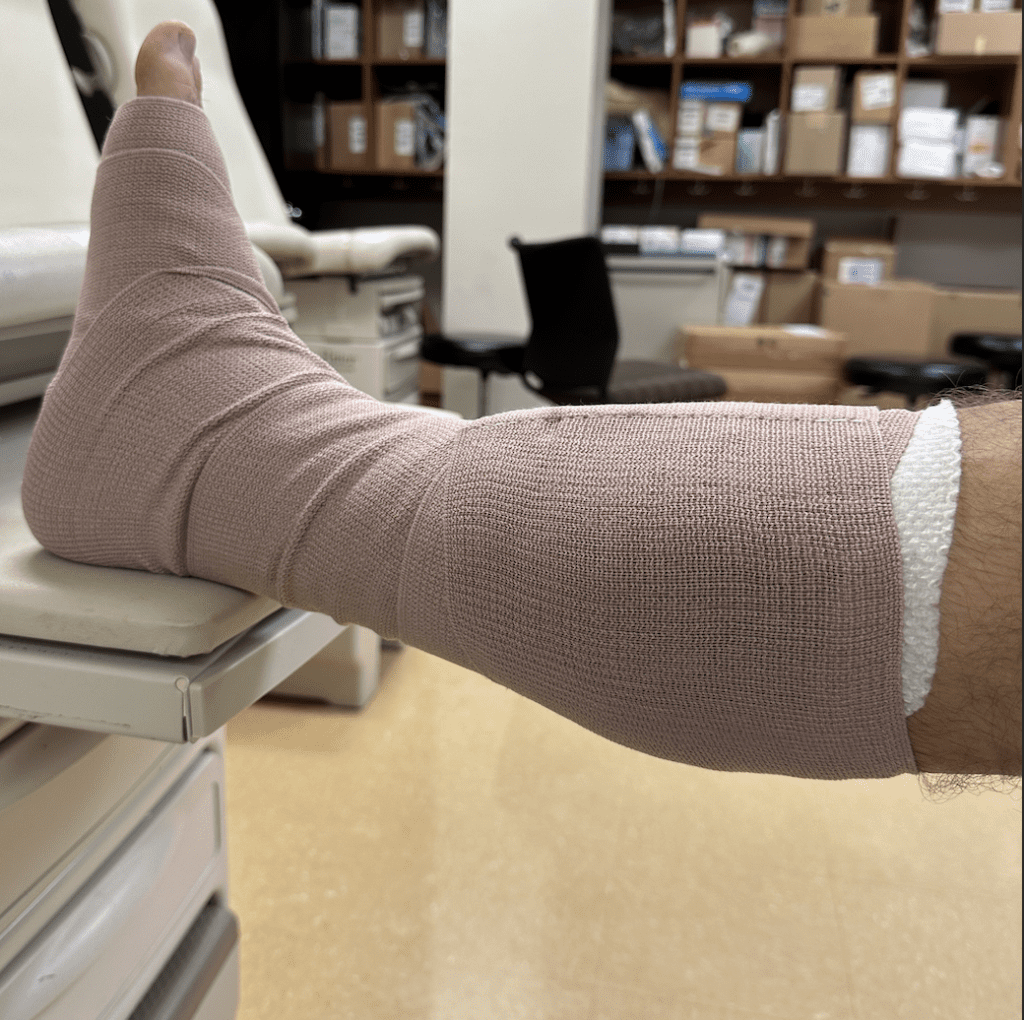

Step 3: Apply the Second Layer
The second layer begins with the application of multiple rolls of 4-inch specialist cast from just distal to the 1st and 5th metatarsal heads proximally to a level just distal to the tibial tuberosity. When applying the cast padding, attempt to create a pressure gradient from distal to proximal. Then apply a second 6-inch Ace bandage from distal (metatarsal phalangeal joint level) to proximal. The 2nd-layer is placed with slightly greater pressure than the 1st layer.
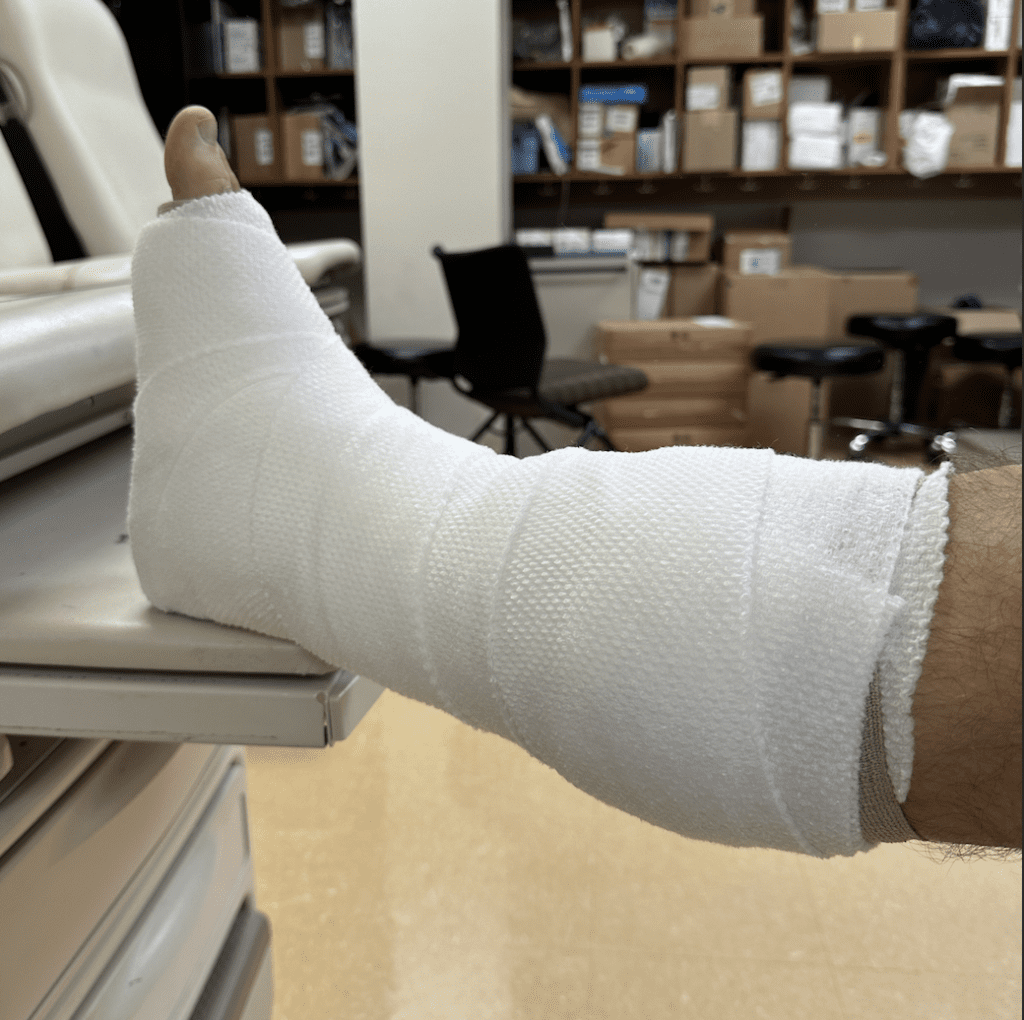

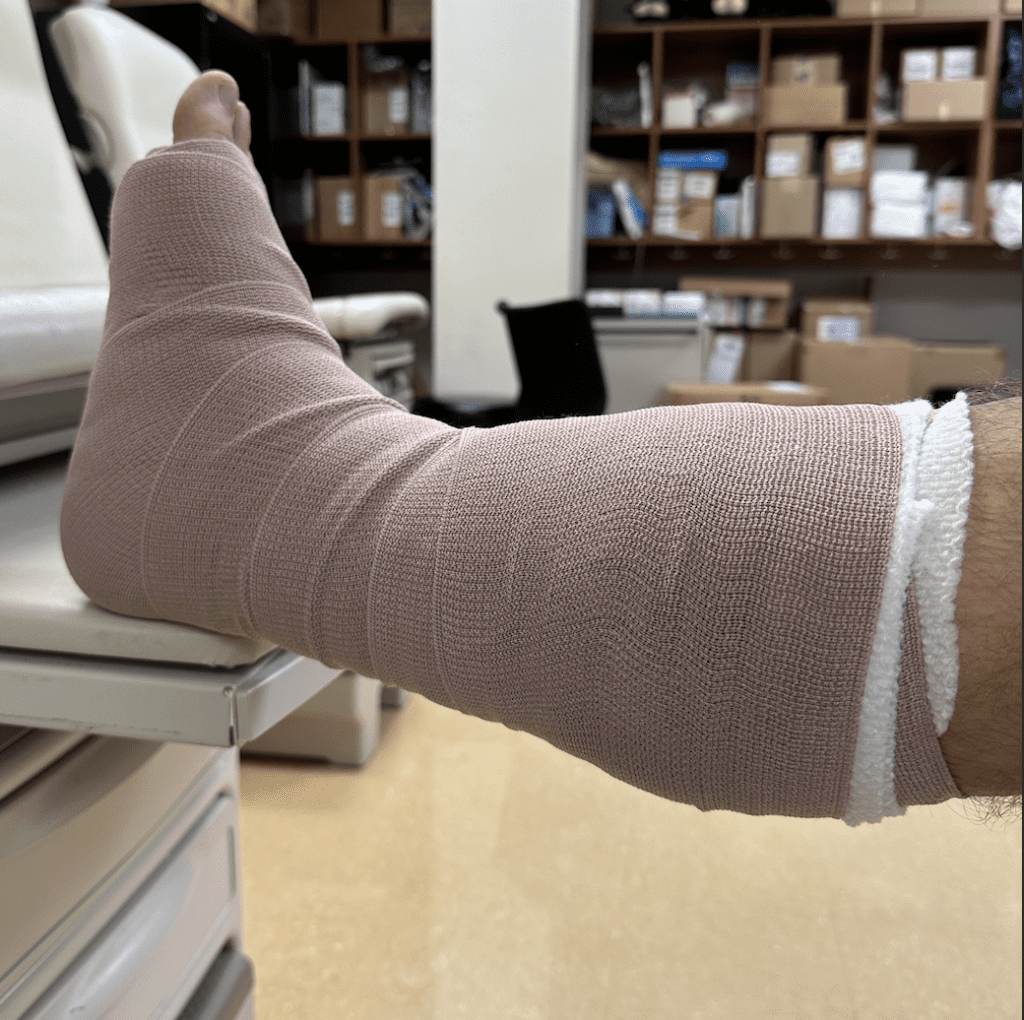

Step 4: Apply the 3rd-layer (optional)
The entire bandage is covered with 1 layer of Webril. Next, the 1st 5 x 30 inch plaster splint is applied as a stirrup. A 2nd 5 x 30 inch plaster splint is applied across the plantar/distal aspect of the foot and crossing in front of the ankle joint. Finally, a 6-inch Ace bandage (or coban) is applied over the plaster splints.
Step 5: Check for Proper Circulation
After applying the dressing, it’s important to check for signs of proper circulation. Ensure the patient’s digits are warm and have intact capillary refill time. If there are any signs of discoloration, coldness, or numbness, the dressing may be too tight, and you should reevaluate and readjust as necessary.
Step 6: Monitor and Adjust as Needed
Regularly monitor the patient’s condition. If the swelling persists or worsens, or if the patient experiences increased pain, it may be necessary to reapply the dressing with adjusted pressure.
By following these steps, you can effectively apply a Jones compression dressing to provide support and promote healing for lower limb injuries and swelling. Always remember to handle any medical procedure with care and seek professional advice when needed.
Please comment below with questions or pearls that you’d like to share regarding the Jones Compression Dressing.


Leland Jaffe DPM, FACFAS
Associate Professor and Dean
Podiatric Physician and Surgeon
North Chicago, Illinois

